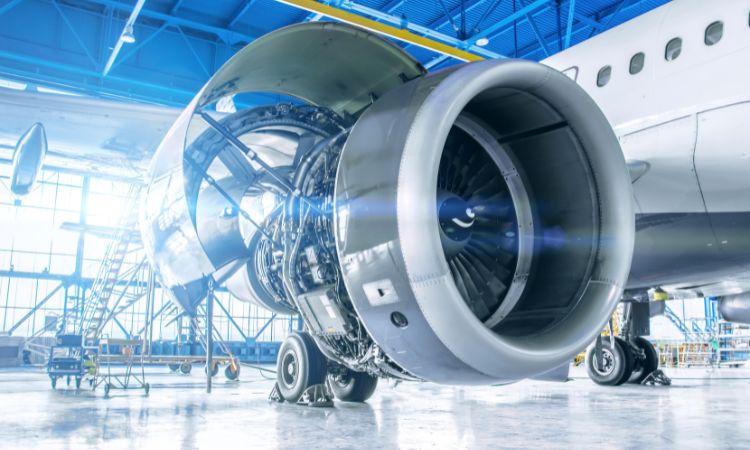The global aircraft engine market size attained a value of $95.1 billion in 2023. The market is expected to grow at a CAGR of 7.3% between 2024 and 2032, reaching almost $179.3 billion by 2032. This impressive growth reflects the increasing demand for air travel, advancements in engine technology, and the continuous evolution of the aviation sector. In this blog post, we will delve into the various segments of the aircraft engine market, regional dynamics, market forces, and the competitive landscape shaping its future.
Market Overview
Aircraft engines are vital components of the aviation industry, powering everything from commercial jets to military aircraft. As the backbone of air travel, the performance, efficiency, and reliability of these engines are crucial. Market analysis provides valuable insights for stakeholders, including manufacturers, suppliers, and investors, highlighting opportunities and challenges that lie ahead. Understanding the current market size and growth trends is essential for making informed strategic decisions.
Engine Type Segmentation
The aircraft engine market can be segmented by engine type, which includes turboprop, turboshaft, turbofan, piston engines, and others. Each type has unique characteristics and applications.
Turboprop Engines
Turboprop engines are typically used in regional and commuter aircraft. They combine jet engine technology with a propeller, making them more fuel-efficient at lower speeds. The market for turboprop engines is expected to grow steadily due to their suitability for shorter routes and regional air travel.
Turboshaft Engines
Turboshaft engines power helicopters and some military aircraft. They are designed for high efficiency and reliability in vertical take-off and landing operations. The increasing demand for helicopters in military and emergency services is driving growth in this segment.
Turbofan Engines
Turbofan engines are the most common type used in commercial aviation, known for their high efficiency and performance. The demand for larger and more fuel-efficient aircraft continues to drive the turbofan engine market. Innovations such as geared turbofans are expected to further enhance performance and reduce emissions.
Piston Engines
Piston engines are primarily used in general aviation aircraft and smaller planes. While their market share is smaller compared to turbine engines, they remain popular for training and recreational flying due to their lower operational costs.
Other Engine Types
Emerging technologies, such as electric and hybrid engines, are beginning to make an impact on the market. Although still in the nascent stage, these innovations could reshape the future of aircraft propulsion.
Wing Type Segmentation
The aircraft engine market can also be segmented by wing type, specifically fixed wing and rotary wing.
Fixed Wing Aircraft
Fixed wing aircraft are predominantly used for commercial flights and cargo transport. This segment represents the largest share of the market, driven by increasing air travel demand and the need for efficient freight transport. Key players are focusing on developing next-generation aircraft that utilize advanced materials and technologies.
Rotary Wing Aircraft
Rotary wing aircraft, or helicopters, are crucial for military, search and rescue, and medical evacuation operations. The demand for advanced rotary wing platforms is growing, leading to innovations in turboshaft engine technology.
Aircraft Type Segmentation
The market can also be analyzed based on aircraft type: commercial, military, general aviation, and others.
Commercial Aircraft
The commercial aircraft segment dominates the market, fueled by the rapid expansion of air travel and globalization. The ongoing recovery from the COVID-19 pandemic has further accelerated this growth, as airlines invest in modern, fuel-efficient fleets.
Military Aircraft
The military aircraft segment remains a critical area of investment, particularly for nations seeking to modernize their defense capabilities. Advances in stealth technology and performance are shaping new requirements for military engines.
General Aviation
General aviation encompasses a wide range of activities, from private flying to business jets. This segment is experiencing a resurgence, particularly in regions with growing economies, as more individuals and businesses seek to invest in private aircraft.
Other Aircraft Types
Niche markets, including UAVs (unmanned aerial vehicles) and experimental aircraft, are also emerging. These segments may present new opportunities for innovation and market expansion.
Regional Analysis
North America
North America is a significant player in the aircraft engine market, hosting major manufacturers and a robust aerospace industry. The region is characterized by a high demand for commercial and military aircraft, supported by government investment and defense contracts.
Europe
Europe is also a key market, with a strong focus on sustainability and reducing emissions. European manufacturers are investing in research and development to create more efficient engines, reflecting the region’s commitment to environmental standards.
Asia-Pacific
The Asia-Pacific region is witnessing rapid growth, driven by increasing air travel demand, urbanization, and a burgeoning middle class. Countries like China and India are investing heavily in aviation infrastructure, which will significantly impact the aircraft engine market.
Rest of the World
Emerging markets in Latin America, the Middle East, and Africa are gradually making their presence felt in the aircraft engine market. While these regions currently represent a smaller share, increasing air travel demand and economic development are expected to drive future growth.
Market Dynamics
SWOT Analysis
A SWOT analysis reveals the strengths, weaknesses, opportunities, and threats in the aircraft engine market. Key strengths include technological advancements and a diverse range of applications. However, weaknesses may arise from high development costs and regulatory hurdles. Opportunities are plentiful, particularly in emerging markets and new technologies, while threats include geopolitical tensions and fluctuating oil prices.
Porter’s Five Forces Analysis
Porter’s Five Forces analysis provides insights into the competitive landscape. The bargaining power of suppliers and buyers, the threat of new entrants, the threat of substitute products, and the intensity of rivalry among existing competitors all play significant roles in shaping the market dynamics.
Competitive Landscape
The competitive landscape of the aircraft engine market is characterized by several key players, including GE Aviation, Pratt & Whitney, Rolls-Royce, and Safran. These companies are continuously investing in R&D to stay ahead of the curve. Emerging companies are also innovating in electric and hybrid propulsion technologies, potentially altering the competitive landscape.
